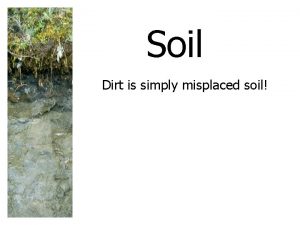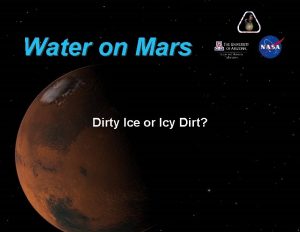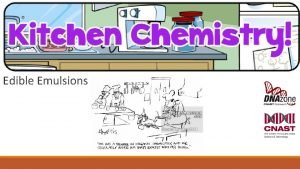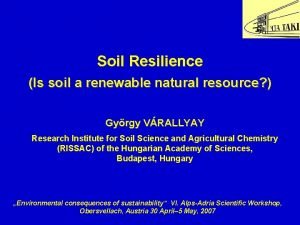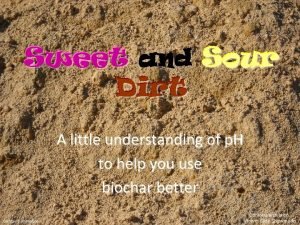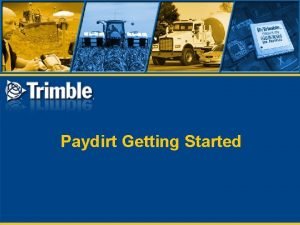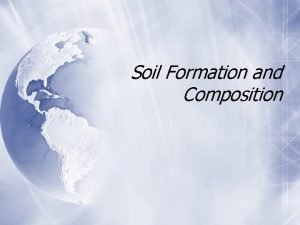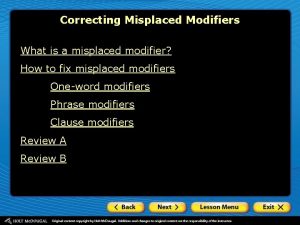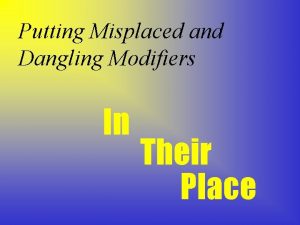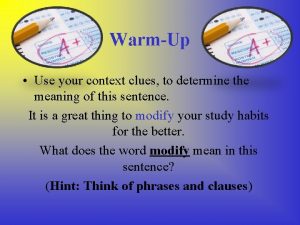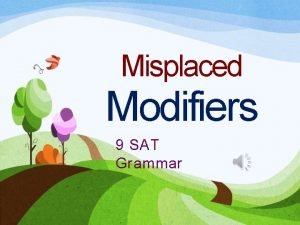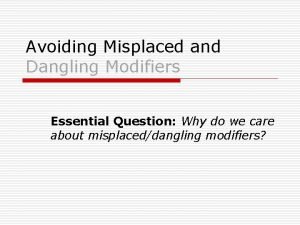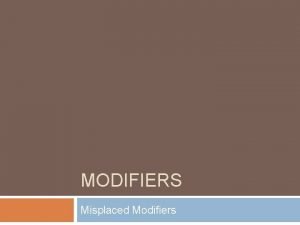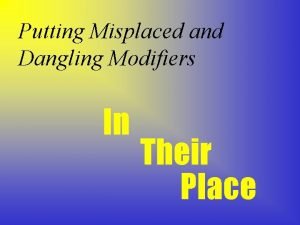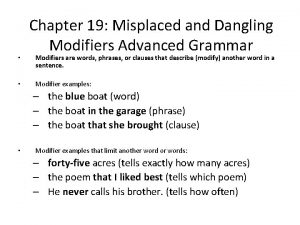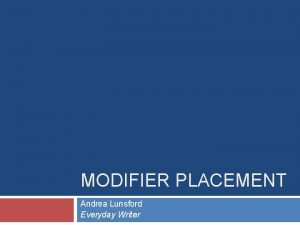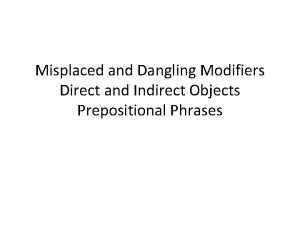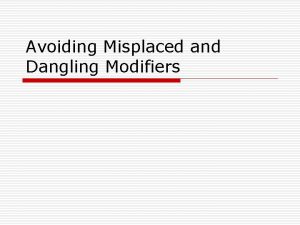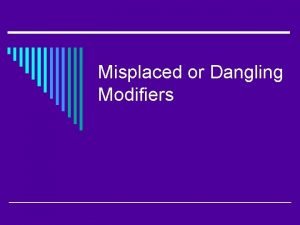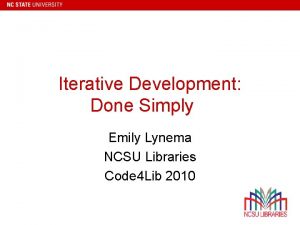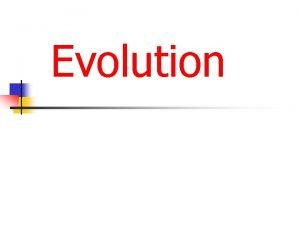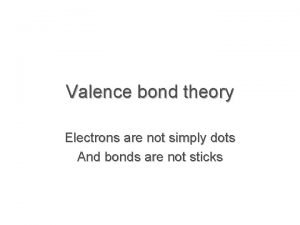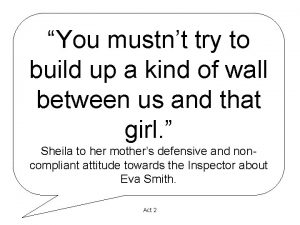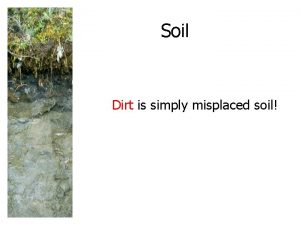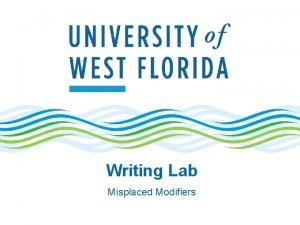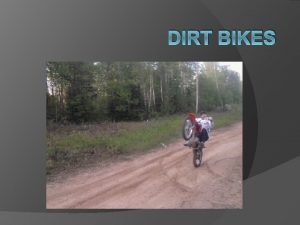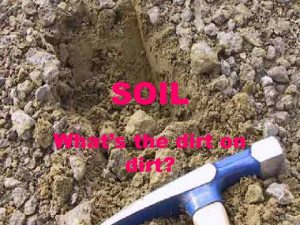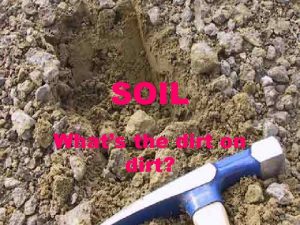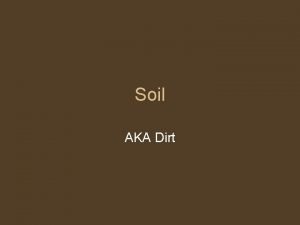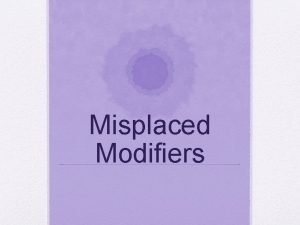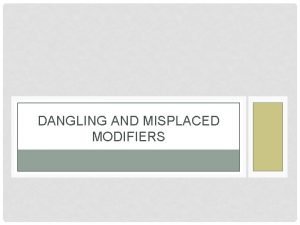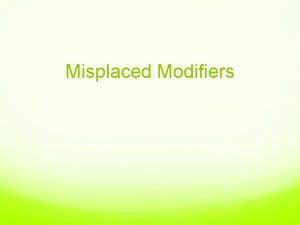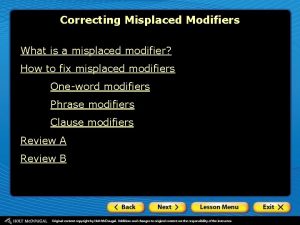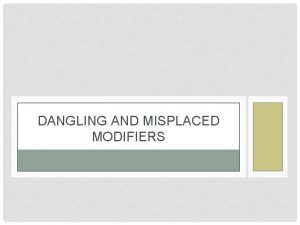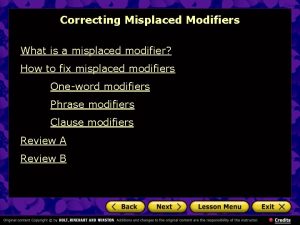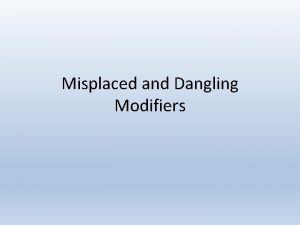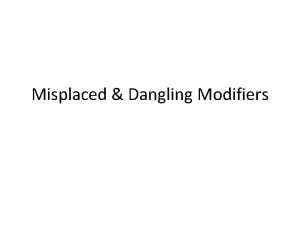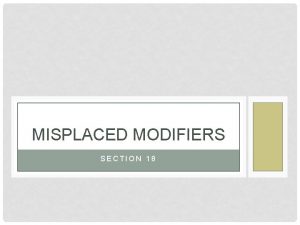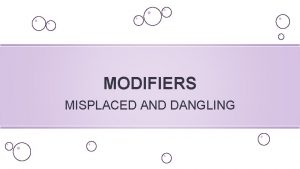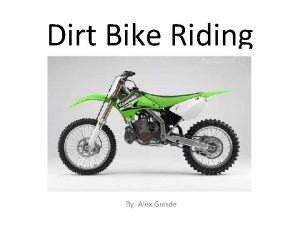Soil Dirt is simply misplaced soil SOIL A



































- Slides: 35

Soil Dirt is simply misplaced soil!

SOIL: A RENEWABLE RESOURCE • Soil is a slowly renewed resource that provides most of the nutrients needed for plant growth and also helps purify water. – Soil formation begins when bedrock is broken down by physical, chemical and biological processes called weathering. • Mature soils have developed over a long time arranged in a series of horizontal layers, soil horizons.

Erosion Transportation Weathering Deposition Igneous rock Granite, pumice, basalt Sedimentary rock Sandstone, limestone Heat, pressure Cooling Heat, pressure, stress Magma (molten rock) Melting Metamorphic rock Slate, marble, gneiss, quartzite Fig. 15 -8, p. 343

Layers in Mature Soils • Infiltration: the downward movement of water through soil. • Leaching: dissolving of minerals and organic matter in upper layers carrying them to lower layers. • The soil type determines the degree of infiltration and leaching.

SOIL: Horizons

Soil Horizons • O horizon: leaf litter • A horizon: top soil • E horizon: eluviation zone; – eluviation is the lateral or downward movement of dissolved or suspended material within soil when rainfall exceeds evaporation, a. k. a. infiltration. – A & E horizons comprise the “zone of leaching” • B horizon: subsoil • C horizon: parent material • Bedrock

Soil Texture

Particle Size Distribution (Texture) • Important for determining suitability for various uses • Considered a basic property because it doesn’t change

Properties Related to Texture – Porosity – Permeability – Infiltration – Shrink-swell – Water holding Capacity – Erodibility

Soil Separates • Most soils have a combination of soil particles sizes – Sand – Silt – Clay

Soil Particles • Soils vary in the size of the particles they contain, the amount of space between these particles, and how rapidly water flows through them. Figure 3 -25

Sand • Gritty feel • Can be seen with the naked eye • Hand sampling: – No residue left on hand

Silt • Dry: Powdery smooth feel, flourlike • Wet: Creamy slick, slippery feel • No sticky or plastic feel • Can be seen with a hand lens or microscope • Hand sampling: – Coats hand, able to brush off

Clay • Dry: Hard feel • Wet: Sticky, plastic feel • Can be seen with an electron microscope • Hand Sampling: – Sticks to fingers

Particle Sizes – Clay: less than 0. 002 mm – Silt: 0. 002 -0. 05 mm – Sand: 0. 05 -2 mm • • – – 0. 05 -0. 24 mm fine 0. 25 -0. 49 mm medium 0. 5 -0. 99 mm coarse 1 - 2 mm very coarse Gravels: 2 -75 mm Cobbles: 75 -250 mm Stones: 250 -600 mm Boulders: >600 mm

Texture by Feel

Fine Textured Soil • Large amounts of silt and clay, making it "muddy" when wet • Pore spaces are small, but numerous and hold more water • As clay soils begin to dry, they may still hold large quantities of water, but adhesive and cohesive properties of water make it unavailable for root uptake

Fine Textured Soil

Coarse Textured Soil – Large pore spaces and allows water to easily run through it beyond the reach of roots – Drought-prone – Little surface area for the particle volume, reducing fertility

Coarse Textured Soil

Loamy Soil • A mix of sand, silt, and clay that optimizes agricultural productivity

Sand + Silt + Clay = 100% 34 % Sand 33 % Silt 33 % Clay Texture = CLAY LOAM

General Influence of Soil Separates on Properties and Behaviors of Soils Property/Behavior Sand Silt Clay Water holding Low Med-high Aeration Good Med Poor OM decomposition Fast Med Slow Water erosion pot. Low High Low Compact-ability Low Med High Sealing (ponds) Poor Good Nutrient supplying Poor Med-high High Pollutant leaching High Med Low

Soil Texture and Surface Area • As particle size decreases, surface area increases – Clay has about 10, 000 times as much surface area as sand • Surface area has a big effect on: – Water holding capacity – Chemical reactions – Soil cohesion – Ability to support microorganisms

Influences of Soil Properties • Organic Matter is derived from decomposing plant and animal remains • Humus is the dark, moist layer found on the top of a soil profile. This is because it is made up of dead and decaying matter. It is fairly fertile in that the decay process adds nutrients to the soil that plants love to soak up

Influences of Soil Properties • Parent Material: – Rock or original source of soil particles – Effects soil quality – Glacial outwash sands tend to be infertile, or hold few minerals and nutrients important for growth – Soils derived from other sources may be relatively rich in minerals and nutrients – Usually a combination of weathered parent materials and organic matter make a soil

Sources of Parent Material • Weathering or erosive actions: – heating/cooling – freezing/thawing – glaciers – water – wind – chemistry – plants & animals

Porosity and Permeability

Porosity • A measure of the amount of pore space between grains; the ratio of the volume of openings (voids) to the total volume of material. Porosity represents the storage capacity of geologic material

Permeability • A measure of the ability for fluid to pass through the pores.

Soil Nutrition

Nutrients in Soil • Nutrients are chemical elements and compounds found in the environment that plants and animals need to grow and survive (like nitrates and phosphates) – 13 mineral nutrients come from the soil (dissolved in water and absorbed through the plants roots) – Not always enough in the soil for the plant to grow healthy = need fertilizer

Macronutrients • Macronutrients are those elements and compounds needed in large quantities for a plant to grow. • The primary nutrients are nitrogen (N), phosphorus (P), and potassium (K). – These major nutrients usually are lacking from the soil first because plants use large amounts for their growth and survival. • The secondary nutrients are calcium (Ca), magnesium (Mg) and sulfur (S) – There are usually enough of these nutrients in the soil so fertilization is not always needed.

Micronutrients • Micronutrients are those elements essential for plant growth which are needed in only very small (micro) quantities and are sometimes called minor elements or trace elements. – Boron, Copper, Iron, Chloride, Manganese, Molybdenum, and Zinc

Soil p. H is a factor • Soil p. H (a measure of the acidity or alkalinity of the soil) • Soil p. H is one of the most important soil properties that affects the availability of nutrients. – Macronutrients tend to be less available in soils with low p. H. – Micronutrients tend to be less available in soils with high p. H.
 Thomson higher education 2007
Thomson higher education 2007 Icy dirt
Icy dirt Abiotic factors
Abiotic factors Motorsport sponsorship proposal
Motorsport sponsorship proposal How does soap remove dirt
How does soap remove dirt Dirt bioe
Dirt bioe Is dirt renewable
Is dirt renewable Alliteration song lyrics
Alliteration song lyrics Sour dirt
Sour dirt Provirrbs
Provirrbs Vray edge texture
Vray edge texture The dirt
The dirt Paydirt software
Paydirt software Is dirt biotic or abiotic
Is dirt biotic or abiotic Why did scout rub walter cunningham's nose in the dirt?
Why did scout rub walter cunningham's nose in the dirt? What. is. soil
What. is. soil Correct misplaced modifiers
Correct misplaced modifiers Misplaced or dangling modifier
Misplaced or dangling modifier Context clues warm up
Context clues warm up Modifiers sat
Modifiers sat Dangling clause
Dangling clause Difference between misplaced and dangling modifiers
Difference between misplaced and dangling modifiers Dangling misplaced modifiers
Dangling misplaced modifiers Misplace modifiers
Misplace modifiers Grammar modifiers
Grammar modifiers Limiting modifiers
Limiting modifiers Dangling preposition
Dangling preposition Modifier
Modifier The torn student’s book lay on the desk.
The torn student’s book lay on the desk. Examples of dangling modifier
Examples of dangling modifier Simply emily
Simply emily Hue tint tone shade
Hue tint tone shade Bottleneck effect
Bottleneck effect Dot sp
Dot sp Simply shakespeare macbeth
Simply shakespeare macbeth Nothing but morbid curiosity analysis
Nothing but morbid curiosity analysis
